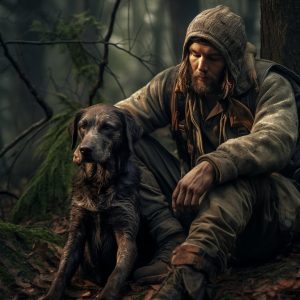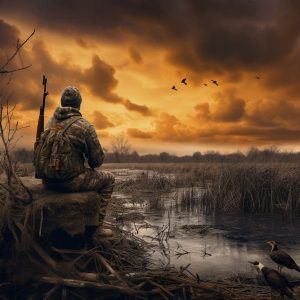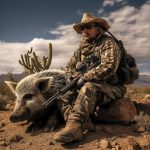Hunting, a time-honored tradition that has woven itself into the fabric of human culture, is an activity that transcends mere survival.
For many, it is a way to connect with nature, build camaraderie, and experience the thrill of the chase. When embarking on a hunting expedition with a group, the importance of proper walking techniques cannot be overstated.
Safety, communication, and an understanding of the natural environment are paramount to a successful and enjoyable hunt.
Contents
- 1 The Importance of Proper Walking Techniques
- 2 Factors to Consider When Walking Together
- 3 Essential Guidelines for Walking as a Hunting Group
- 4 Walking Formations for Different Hunting Scenarios
- 5 Safety Precautions for Walking with Firearms
- 6 Additional Tips for Walking as a Hunting Group
- 7 Conclusion:
- 8 FAQs
- 8.1 Why is it important for hunters to walk together in a specific way?
- 8.2 How does the terrain influence the way hunters should walk together?
- 8.3 What factors should hunters consider when deciding on their walking formation?
- 8.4 How far apart should hunters be when walking together?
- 8.5 What role does communication play in walking together as a hunting group?
- 8.6 How do hunters adapt their walking formation based on the target species?
The Importance of Proper Walking Techniques
In the vast expanse of the wilderness, where every step is a dance with nature, the way hunters move together can significantly impact the outcome of their pursuit.
Beyond the aesthetics of synchronized movement, proper walking techniques enhance safety, communication, and the group’s overall efficiency.
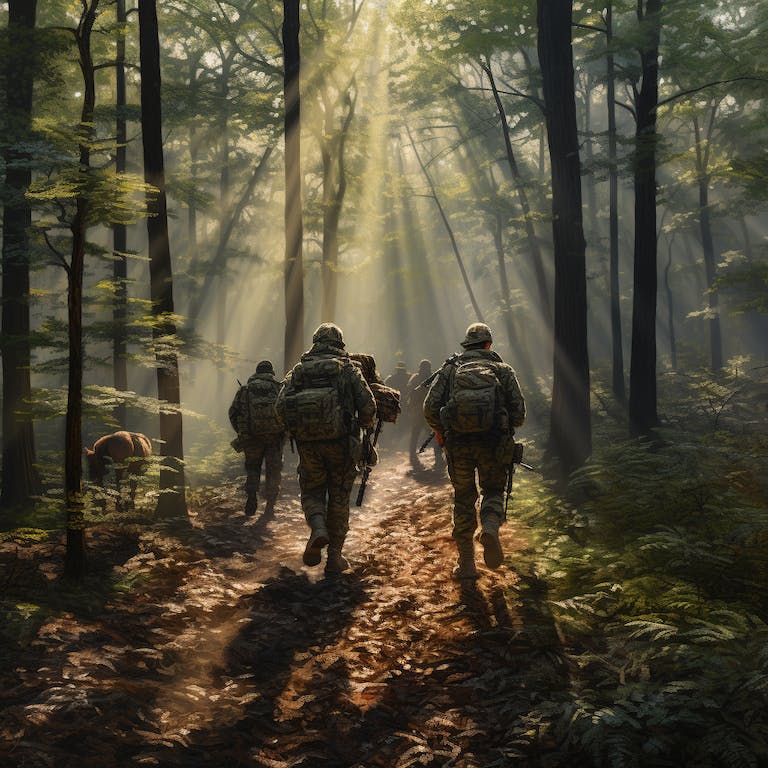
Factors to Consider When Walking Together
Terrain
The terrain sets the stage for the hunter’s performance. In dense vegetation or challenging landscapes, a single-file formation becomes imperative to prevent entanglement and separation.
Conversely, in open terrain, a more dispersed approach is viable, allowing hunters to maintain a safe distance.
Target Species
Understanding the behavior of the target species is fundamental. When tracking deer, known for their skittish nature, a wide line formation may be adopted to cover more ground and increase the likelihood of spotting game.
Hunting Group Size
The size of the hunting group is a crucial factor influencing the formation and spacing during the expedition. Smaller groups may opt for a linear or abreast configuration, while larger groups must adjust to prevent congestion and ensure visibility.
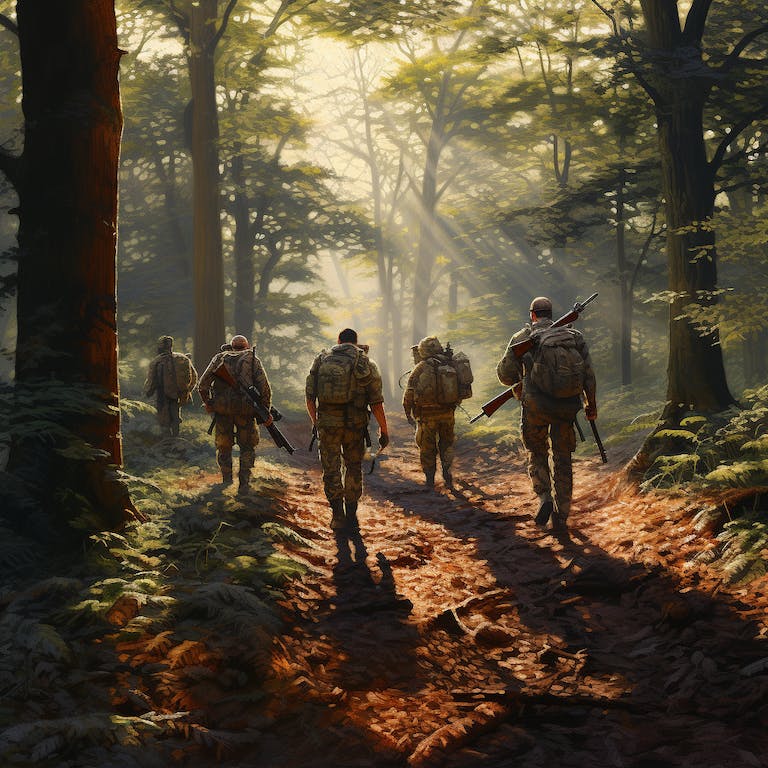
Essential Guidelines for Walking as a Hunting Group
- Maintain a Safe Distance: Always keep a safe distance from fellow hunters, ranging from 25-40 yards, depending on the terrain and hunting conditions.
- Communicate Effectively: Clear and consistent communication is paramount. Informing each other about movements, potential hazards, and game sightings fosters a safer and more productive hunt.
- Be Aware of Your Surroundings: Vigilance is key. Paying attention to both potential game and environmental hazards minimizes the risk of accidents.
- Avoid Sudden Movements: A steady and consistent pace minimizes the likelihood of startling game. Sudden stops or turns can compromise the success of the hunt.
- Utilize Proper Hand Signals: Hand signals provide a silent means of communication. Establishing a set of signals beforehand facilitates coordination in the field.
- Respect the Natural Environment: Leave no trace behind. Respect the wilderness by packing out all trash and minimizing disruption to the natural habitat.
Walking Formations for Different Hunting Scenarios
Single File
In dense vegetation or challenging terrain, a single-file formation is the most practical. This ensures a clear path, preventing hunters from getting entangled or separated.
Line Abreast
Ideal for open terrain with good visibility, the line abreast formation allows hunters to cover more ground, increasing the chances of spotting game.
Staggered Line
Tailored for species that tend to flee from movement, a staggered line formation places hunters at intervals along a line, enhancing the group’s chances of intercepting fleeing game.
Hunting with Dogs
When accompanied by canine companions, coordination is key. Allowing dogs to work ahead and using predetermined hand signals or whistles ensures effective teamwork between hunters and their four-legged allies.
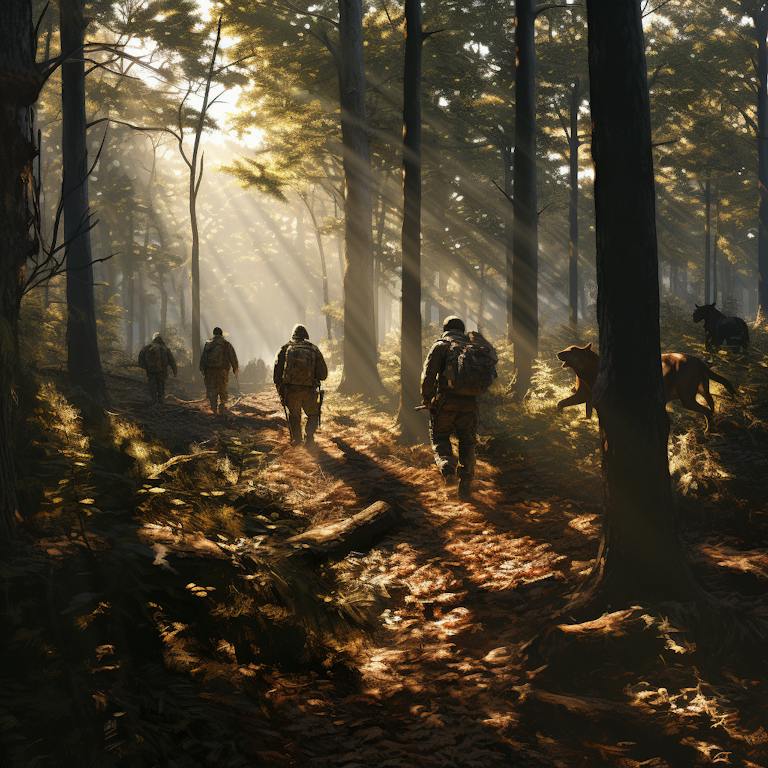
Safety Precautions for Walking with Firearms
Adhering to the Four Cardinal Rules of Firearm Safety is non-negotiable:
- Treat every firearm as if it were loaded.
- Never point a firearm at anything you are not willing to destroy.
- Keep your finger off the trigger until you are ready to shoot.
- Be sure of your target and what is beyond it.
Additional Tips for Walking as a Hunting Group
- Dress Appropriately: Tailor your attire to the specific terrain and weather conditions to ensure comfort and safety.
- Increase Visibility: Wear bright clothing to enhance visibility among the hunting party, reducing the risk of accidents.
- Carry a First-Aid Kit: Preparedness is key. A well-equipped first-aid kit and knowledge of its use can be a lifesaver in unforeseen circumstances.
- Know and Follow Regulations: Adherence to local hunting regulations and restrictions is essential for a responsible and legal hunting experience.
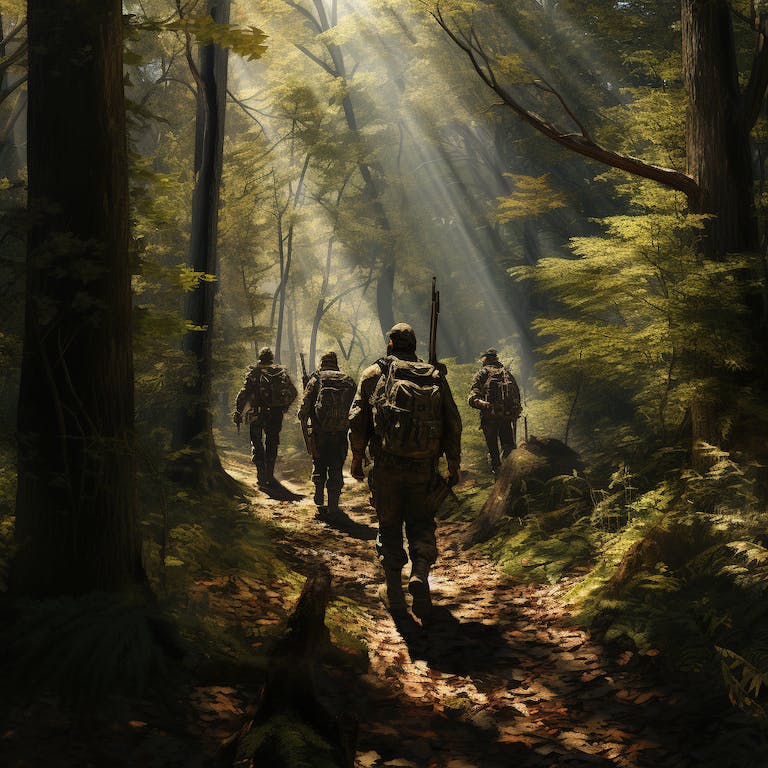
Conclusion:
In conclusion, the art of walking together as a hunting group is a nuanced dance that combines respect for nature, effective communication, and adherence to safety protocols.
Mastering these elements ensures not only a successful hunt but also an enriching and harmonious experience in the great outdoors.
FAQs
Why is it important for hunters to walk together in a specific way?
Proper walking techniques are crucial for group hunting to ensure safety, enhance communication, and improve the overall effectiveness of the hunt. Coordinated movement helps hunters avoid accidents, spot game more efficiently, and navigate different terrains.
How does the terrain influence the way hunters should walk together?
The terrain dictates the pace and formation of the group. In dense or challenging terrain, a single-file formation is often necessary to prevent entanglement. In open terrain, hunters can spread out more, adopting formations that maximize visibility and cover more ground.
What factors should hunters consider when deciding on their walking formation?
Hunters should consider the type of terrain, the behavior of the target species, and the size of the hunting group. These factors influence whether a single-file, line abreast, or staggered line formation is most appropriate for the specific hunting scenario.
How far apart should hunters be when walking together?
Maintaining a safe distance is crucial, typically ranging from 25 to 40 yards. However, the specific distance may vary based on the terrain and hunting conditions. The primary goal is to ensure that hunters have enough space to react safely to unforeseen circumstances.
What role does communication play in walking together as a hunting group?
Clear and consistent communication is paramount for safety and productivity. Hunters should inform each other of their movements, potential hazards, and game sightings. Establishing effective communication, including the use of hand signals, fosters a coordinated and harmonious hunting experience.
How do hunters adapt their walking formation based on the target species?
The behavior of the target species influences the walking strategy. For example, when hunting skittish animals like deer, a wide line formation may be adopted to cover more ground and increase the chances of spotting game.
Sources:
https://www.yumpu.com/en/document/view/32965419/sport-dueling-tree-assembly-instructions-action-target
